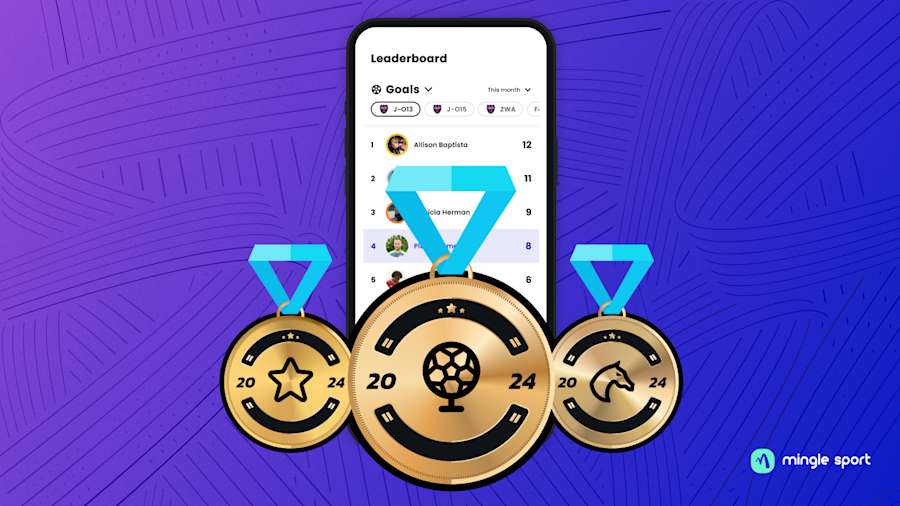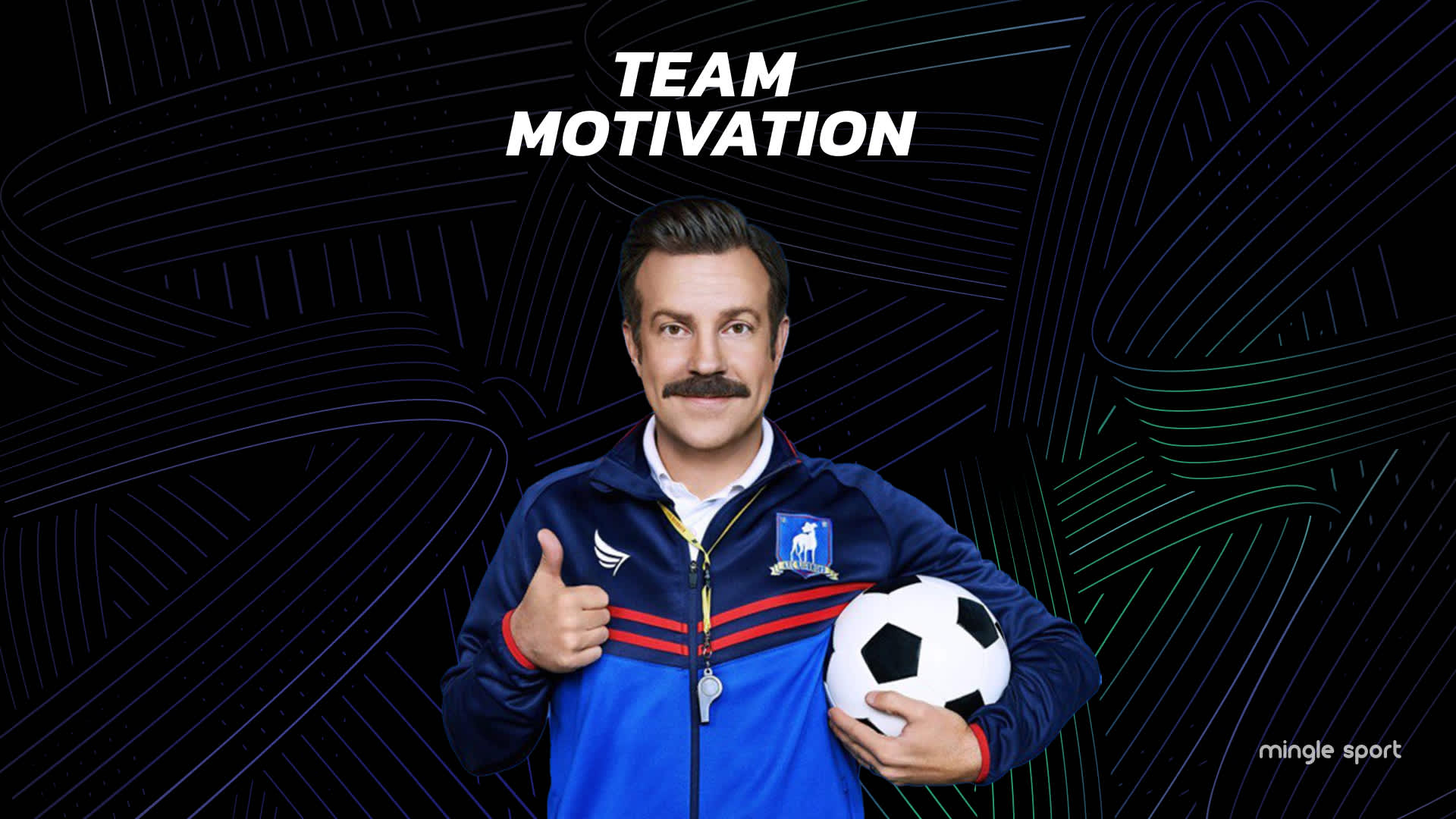How to improve Team Motivation and Engagement with Gamification

Gamification, the use of game design elements in non-game contexts, has become a powerful tool in various fields, including education, marketing, and health. In the context of sports, gamification aims to enhance motivation, engagement, and performance. This blog explores the concept of gamification, the psychological theories underpinning its effectiveness, and practical tips for implementing gamification in sports apps.
The Theory: Why Does Gamification Work?
The Social Determination Theory (SDT)
When looking at what motivates someone to engage in sport, the Social Determination Theory (SDT) is often used. This theory states that there are different types of motivation, ranging from being motivated by external factors such as benefits for health, peer pressure or tangible rewards (’extrinsic motivation’), to being motivated because you truly enjoy doing the sport (’intrinsic motivation’). The SDT indicates that to become motivated an individual’s 3 psychological needs have to be fulfilled. The person needs to feel:
That they are competent at the task/sport they are performing (need for competence)
That they have a choice in what or which activity they are performing (need for autonomy)
That performing the task/sport is generally accepted and supported by their peers and significant others (need for relatedness)
Research has shown that in a context of gamification in health apps fulfilling the psychological needs of the SDT has a positive effect on the intrinsic motivation of the user to use the health app. In turn, this increased motivation led to users saying they intended to continue to use the app and to and increased satisfaction of the app. From this perspective, gamification should aim to increase the player’s needs of competence, autonomy and relatedness.
“The Flow”
Another perspective is aiming to get people to feel ‘the flow’, which means that they are completely immersed within a task. This theory states that in order to reach the flow (1) perceived challenges of the activity need to match the ability of the person, (2) the goals of the activity need to be clear and reachable and (3) the person receives instant feedback on their progress. Research on applying this idea to gamification showed that it is also important that the activity is an ‘autotelic experience’, i.e. the player is interested in the activity of the app itself (i.e. football) and that the player needs to feel in control. From this perspective, gamification should aim to get the player in “The Flow”.
Effect of gamification according to the SDT and Flow
Studies found that achievement & progress related items (e.g. leaderboards, badges, levels) seem to have an effect on all psychological needs. The idea behind it is as follows:
Reaching achievements increases a player’s feeling of competence (SDT)
Creating multiple achievements allows players to match the challenge to their ability (Flow)
Achievements can provide clear goals (Flow)
Seeing progress and possible to reach achievements allows you to set goals and monitor your own progress which increases their sense of autonomy (SDT)
Achievement/progress related items provide instant feedback on their progress (Flow)
Achievement/progress related items can provide the player with a sense of control over their own progress (Flow)
Sharing achievements with others increases the feeling of relatedness (SDT)
Effective Gamification Elements

Streaks: seem to work better than having no streaks, but none of the included studies have looked at whether streak-type elements work better than other game elements.
Leaderboards: work very well. Competition can keep people motivated. However, it is important to add a few extra features to prevent people who lose to feel demotivated. To achieve this it would be best to implement mastery-oriented achievements/feedback alongside the leaderboards.
Badges: have great potential to work, but is very important how they are designed. Prerequisites for successful badges are:
Achieving a badge should be a real challenge (this way it actually feels like an accomplishment that you would like to share with others).
There needs to be a variety of ‘types’ of badges. Some focused at performance (e.g. first in the leaderboard or scoring a certain score in a mini-challenge) and some focused at mastery (e.g. trying a challenge a set number of times or improving your own average score by X%)
For most badges it should be clear for the player’s what you need to do to achieve it, so players can use this as a goal to work towards. You can add some ‘surprise’ badges, which has been hypothesized to increase player enjoyment but this hasn’t been tested yet.
Each badge should have a clear logic of why/how it is achieved (it needs to make sense in the context that this would be something you would actually like to achieve)
Progress bar: has been shown to work well, especially in combination with other elements (such as levels/ranks).
Combining game elements:
How many gaming elements should be included? It seems that the answer to this is ‘the more, the merrier’. One study found that it is better to combine two elements than just one element and another study found that 3 game elements together (no matter the combination) worked better than just 1 or 2 elements.
However, although no studies addressed adding more than 3 game elements some interviews with users have shown that adding too much might actually lead to people to stop using the app.
Practical Tips for Gamification in Sports Apps
Focus on Achievement/Progress Elements
: Implement leaderboards, points, levels, badges, and progress bars to enhance user motivation.
Balance Competition and Mastery
: Use leaderboards in conjunction with mastery-oriented feedback to ensure all users feel motivated.
Design Challenging Badges
: Create badges that represent real accomplishments and provide clear goals.
Combine Multiple Elements
: Integrate a variety of game elements, but avoid overloading the app with too many features.
Conclusion
Gamification, when implemented effectively, can significantly boost motivation and engagement in sports apps. By leveraging elements such as leaderboards, badges, and progress bars, and aligning them with psychological theories like SDT and Flow, developers can create compelling and enjoyable experiences that keep users motivated and active. As research continues to explore the nuances of gamification, it is clear that a thoughtful, user-centered approach is key to unlocking its full potential in the world of sports.
Sources
Britrián, P., Buil, I., & Catalán, S. (2021). Enhancing user engagement: The role of gamification in mobile apps. https://doi.org/10.1016/j.jbusres.2021.04.028
Groening, C. & Binnewies., C. (2019). “Achievement unlocked!” - the impact of digital achievements as a gamification element on motivation and performance. https://doi.org/10.1016/j.chb.2019.02.026
Groening, C. & Binnewies, C. (2021). The More the merrier? - How adding and removing game design elements impact motivation and performance in a gamification environment. https://doi.org/10.1080/10447318.2020.1870828
Hamari, J., & Koivisto, J. (2014). Measuring flow in gamification: Dispositional Flow Scale - 2 http://dx.doi.org/10.1016/j.chb.2014.07.048
Hamari, J., Koivisto, J., & Sarsa, H. (2014). Does gamification work? - A literature review of empirical studies on gamification. https://doi.org/10.1109/HICSS.2014.377
Hamari, J. (2017). Do badges increase user activity? A field experiment on the effects of gamification. http://dx.doi.org/10.1016/j.chb.2015.03.036
Huynh, D. (2017). An analysis of winning streak’s effects in language course of “duolingo”. https://dspace.jaist.ac.jp/dspace/handle/10119/15292
Mazarakis, A., & Bräur, P. (2023). Gamification is working, but which one exactly? Results from an experiment with four game design elements https://doi.org/10.1080/10447318.2022.2041909
Mazaes, A., Duclos, M., Pereira, B., & Chalabaev, A. (2022). Evaluating the effectiveness of gamification on physical activity: Systematic review and meta-analysis of rnadomized controlled trials. https://www.jmir.org/2022/1/e26779
Mekler, E. D., Brühlmann, F., Tuch, A. N., & Opwis, K. (2015). Towards understanding the effects of individual gamification elements on intrinsic motivation and performance. http://dx.doi.org/10.1016/j.chb.2015.08.048
Mitchell, R., Schuster, L., & Jin, S. J. (2022). Playing alone: can game design elements satisfy user needs in gamified mHealth services? https://academic.oup.com/heapro/article-abstract/37/2/daab168/6397186
Patel, S. M., Small, D. S., Harrison, J. D., Fortunato, M. P. Oon, A. L. et al. (2019). Effectiveness of behaviourally designed gamification interventions with social incentives for increasing physical activity among overweight and obese adults across the united states. https://jamanetwork.com/journals/jamainternalmedicine/fullarticle/2749761
Rewley, J., Guszcza, J., Dierst-Davies, R., Steier, D., Szwartz, G., Patel, M. (2021). Loss aversion explains physical activity changes in a behavioural gamification trial. https://doi.org/10.1089/g4h.2021.0130
Sailer, M., Hense, J., Mandl, H. & Klevers, M. (2013). Psychological perspective on motivation through gamification. https://mediatum.ub.tum.de/doc/1222424/file.pdf
Skvorstova, A., Rodrigues, T. C., Buisonjé de, D., Kowatsch, T., Santhanam, P., Veldhuijzen, D. S., Middendorp van, H., Evers, A. (2022). Increasing the effectiveness of a physical activity smartphone intervention with positive suggestions: randomized controlled trial. https://pubmed.ncbi.nlm.nih.gov/35230245/
Vansteenkiste, M., & Deci, E. L.. (2003) Competitively contingent rewards and intrinsic motivation: Can losers remain motivated? http://selfdeterminationtheory.org/SDT/documents/2003_MaartenDeci.pdf
Xu, L., Shi, H., Shen, M., Ni, Y., Zhang, X., Pang, Y., Yu, T., Lian, X., Yu, T., Yang, X., Li, F. (2022). The effects of mHealth-based gamification interventions on participation in physical activity: systematic review. https://mhealth.jmir.org/2022/2/e27794



